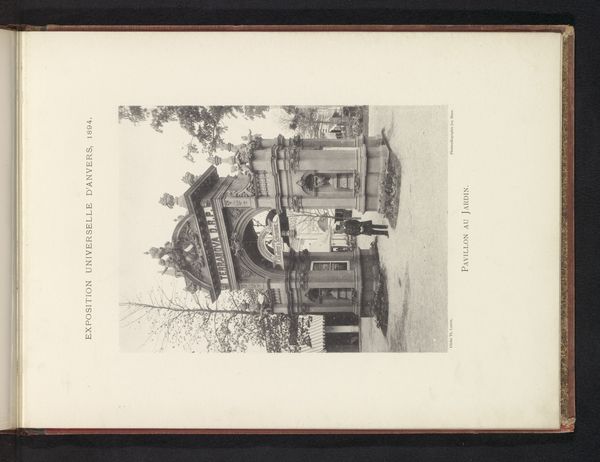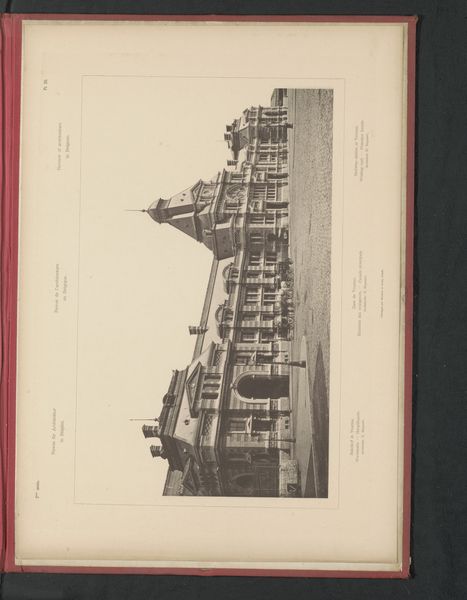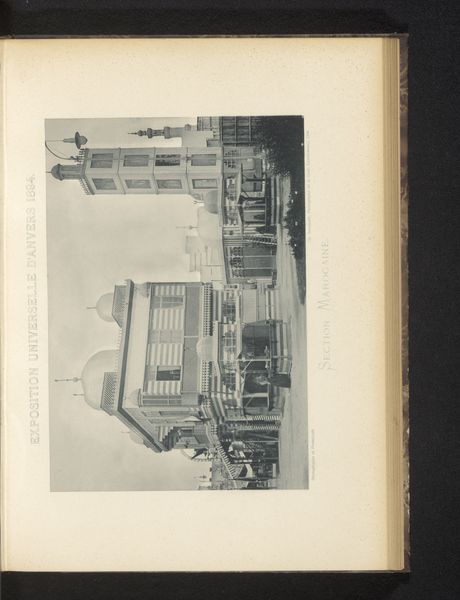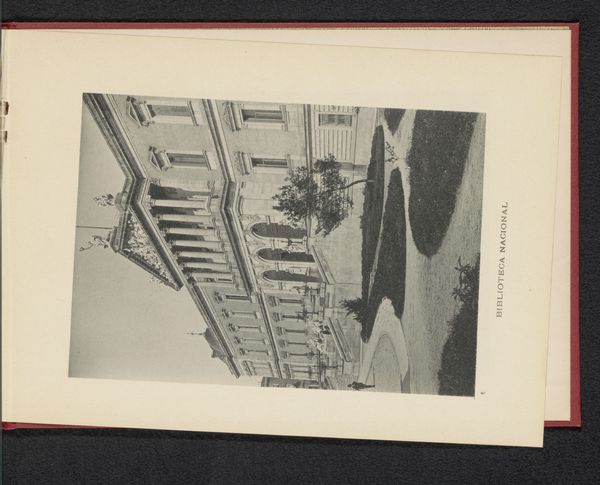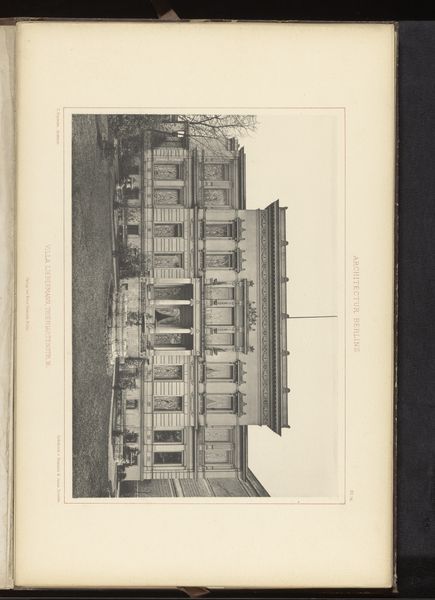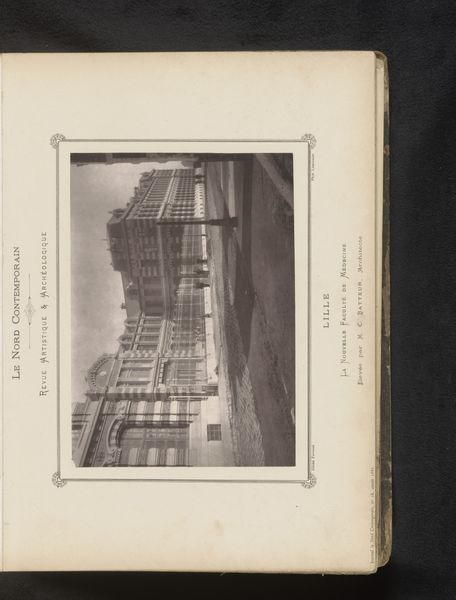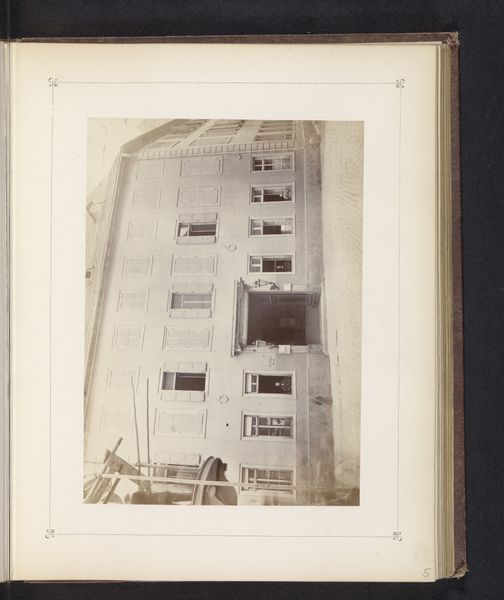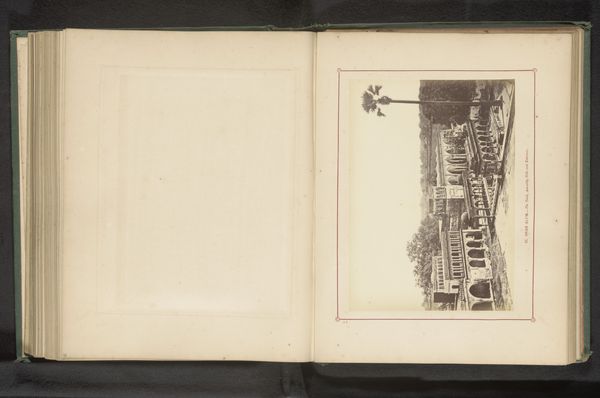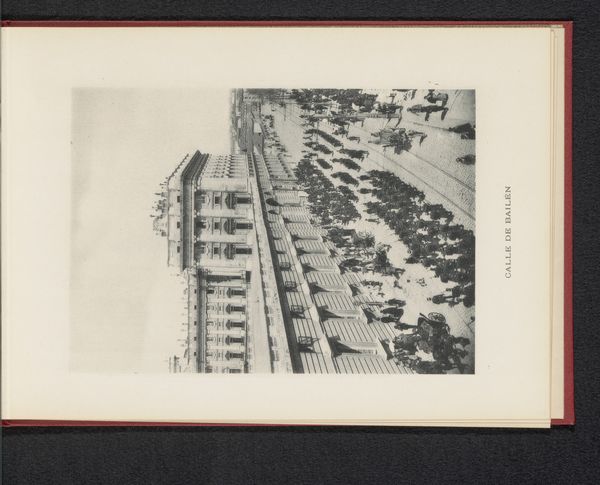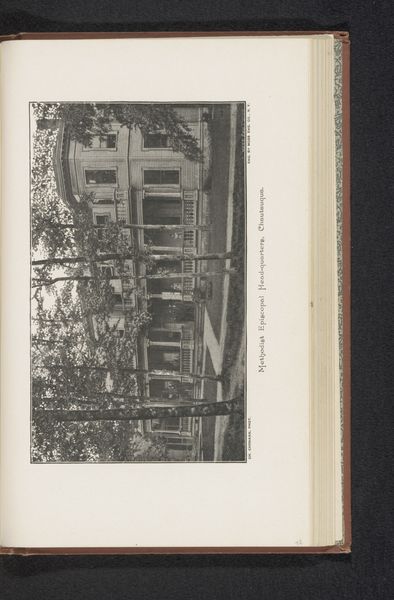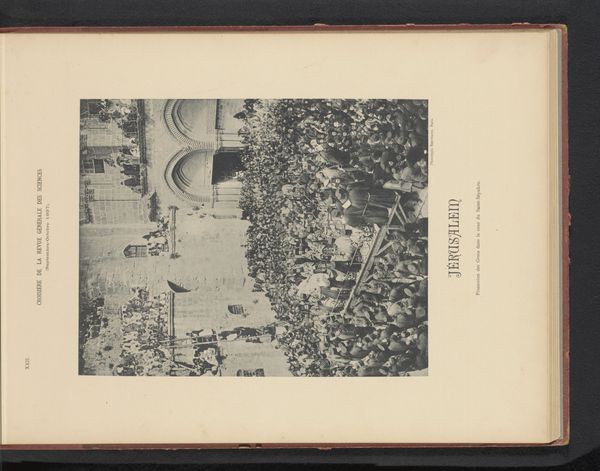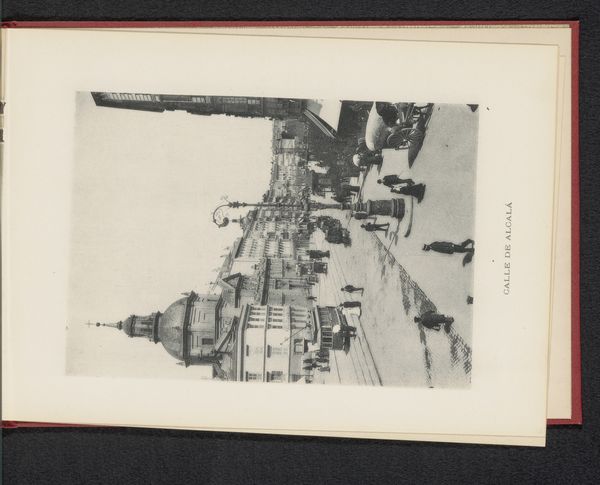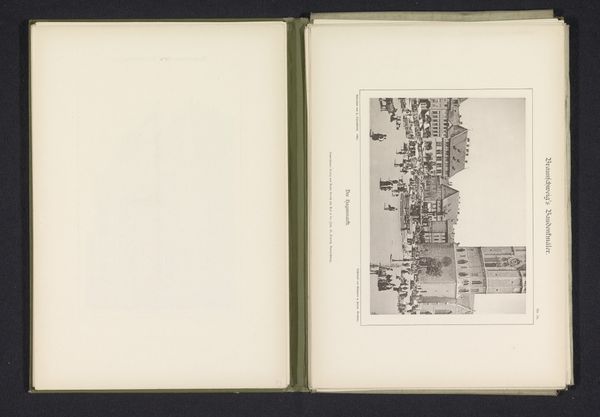
print, photography
# print
#
photography
#
cityscape
#
realism
Dimensions: height 163 mm, width 115 mm
Copyright: Rijks Museum: Open Domain
Curator: This silver gelatin print, titled "Façade van het stadhuis in Madrid," believed to have been created between 1888 and 1898 by Hauser y Menet, depicts a slice of civic life in the Spanish capital. Editor: My immediate response is a sense of aged dignity. The grayscale palette emphasizes the architectural details – the intricate carvings, the rows of windows. Curator: Absolutely. The image, rooted in realism, prompts reflections on urban development and political authority. What can we gather by observing the building, and by extension, those who occupied the city spaces surrounding it? What do the bare trees and passersby communicate about Madrid in that time? Editor: Looking at those details—the sculptural work above the windows, and the slight blurring indicating movement in the street—a narrative of power certainly emerges, but also of ordinary existence, even rebellion perhaps. I find myself drawn to those figures in shadow as representative of common life that continues beneath that weight. Curator: Precisely. There is, of course, the inherent power dynamic with photography itself at the time—who had access, whose story was being told? Even seemingly objective images can still reinforce hierarchies, if viewed passively. Editor: Beyond the sociopolitical elements, the towers speak to something almost primal. Historically, the spire is a symbol of transcendence, spiritual connection. The Madrid city hall perhaps communicates civic aspirations for the entire municipality through those towering elements. Curator: So the building operates as both physical and aspirational infrastructure? I appreciate that nuance, how we can interpret these urban structures and landscapes to glean a vision beyond a single reading of established power. Editor: The photograph is far from simple; it's a dense historical, social, and emotional document. Curator: Indeed. The way the photographer captured it freezes it, demanding that we read those intersecting narratives in still life, and further consider our own roles as inheritors of its legacy.
Comments
No comments
Be the first to comment and join the conversation on the ultimate creative platform.
